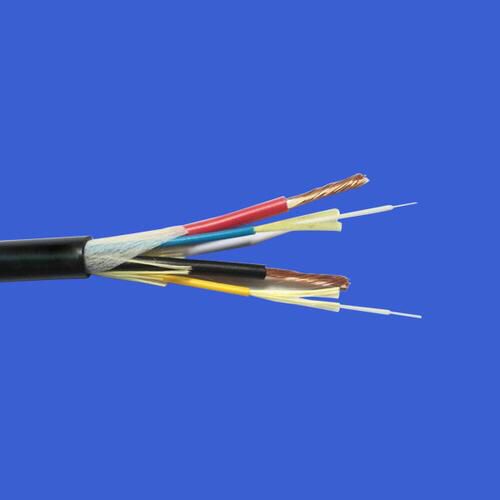Fiber polarity refers to the correct alignment of transmit (Tx) and receive (Rx) signals across a fiber optic link. In fiber polarity management, the signal from one transceiver’s Tx port must precisely arrive at the corresponding Rx port on the other device. Incorrect polarity results in signal loss, connection failure, or poor performance. Understanding and implementing proper fiber polarity is critical to network uptime and efficiency. For a detailed explanation of fiber optic polarity, check out our guide: Understanding Polarity in MTP®/MPO System.
Rule 1: Avoid Changing Characteristics On-the-Fly
A common challenge in MPO/MTP® deployments arises when polarity, pinout, or key orientation of the connector is adjusted on-site without prior planning. While field-configurable components offer flexibility, relying on last-minute changes, especially without specialized knowledge, can lead to human error, deployment delays, and troubleshooting headaches.
To avoid these risks, defining your polarity scheme during the design phase and following a clear, documented plan is essential. One case in point involves a U.S. financial company that needed a multi-story and cross-building cabling solution to support high-speed data transmission. With limited polarity design experience, the client found it difficult to determine when to use Type A or Type B MTP® cables. To resolve the client's difficulty in selecting the correct MTP® cable types, DFT provided a polarity scheme that matched each cable type with the appropriate connectivity components. For example, Type A MTP®-24 trunk cables were used together with Type A and Type AF MTP®-LC cassettes, while polarity was maintained using up/down MTP® adapter panels. This structured setup eliminated on-site polarity decisions and ensured correct connections throughout. Learn more: DFT Builds Multi-story Fiber Cabling Solution for A Financial Company.
Rule 2: Match Adapter Types with Connector Polarity Requirements
To ensure proper fiber optic polarity, it’s critical to use adapter types that align with the polarity scheme of your fiber system. This applies most significantly to MPO systems, where each element is classified by Type A, B, or C, and each type affects signal direction and polarity in different ways.
Always use adapter types that match your polarity design. For example:
Type A adapters mate key-up to key-down, maintaining a straight-through polarity—fiber 1 connects to fiber 1.

Type B adapters mate key-up to key-up, reversing polarity—fiber 1 connects to fiber 12. These are typically used in multimode flat connectors. For APC (angled polish) connectors, key-up to key-up mating is technically possible but not recommended, as the 8° angled polish requires precise alignment to prevent physical damage and high insertion loss.

Rule 3: Adopt a Consistent Polarity Method Throughout Your System
To eliminate polarity mismatches and simplify installation, adopt a consistent polarity method—either Method A or Method B—across your entire MTP®/MPO fiber system, including MTP®/MPO trunk cables, fiber cassettes, MTP®/MPO adapters, and fiber patch cables. This standardization ensures reliable signal transmission, reduces compatibility issues, and streamlines future maintenance and upgrades. Below is a comparison of common polarity configurations:
 Learn more about MTP®/MPO polarity standards and application scenarios: Fiber Polarity Technical White Paper
Learn more about MTP®/MPO polarity standards and application scenarios: Fiber Polarity Technical White Paper
Rule 4: Standardize Components Wherever Possible
Wherever feasible, standardize your cabling components across the entire network. Using the same cable types, polarity methods, and adapter styles not only accelerates deployment but also enables smoother scalability, easier technician onboarding, and more efficient long-term maintenance.
Standardization reduces confusion, ensures compatibility, and minimizes the risk of misconfigurations, especially in large or rapidly growing environments. It is a best practice we strongly recommend for any data center or enterprise network project.
Rule 5: Allow for Differences—But Always Document Them
In real-world deployments, especially across large-scale or legacy networks, maintaining a single fiber polarity method across every link is often impractical. Factors like equipment upgrades, multi-vendor systems, or site-specific design limitations can make polarity deviations unavoidable. That’s why it’s acceptable to deviate from the standard polarity scheme—but only if every deviation is clearly and thoroughly documented. Think of documentation as a permanent guide for your network, not just a one-time task. When polarity information is documented, any technician, now or in the future, can quickly understand the system and ensure continuity without guesswork.
Conclusion
Effective fiber polarity management is essential for ensuring reliable, high-performance fiber optic networks. By following these six rules—avoiding on-the-fly changes, using the correct adapters, selecting appropriate polarity methods, labeling accurately, standardizing components, and documenting exceptions—you can reduce errors, streamline operations, and future-proof your infrastructure.






